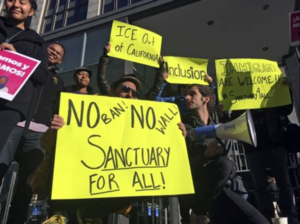Chinese Netizens Use AI Memes to Roast U.S. Politicians After 125% Tariff Shocks Global Markets—this headline reflects the global response to the U.S. decision to impose a steep 125% tariff on Chinese electric vehicles. In an unexpected cultural twist, Chinese citizens have turned to AI-generated memes to mock U.S. leaders, using humor and technology as a modern form of protest.
Why Did the U.S. Impose a 125% Tariff?
The U.S. government announced a 125% tariff on Chinese electric vehicles, aiming to curb what it calls “unfair trade practices” by China. Officials argue this move is meant to protect American jobs, domestic industries, and national security.
However, the decision has triggered a wave of criticism—not only from international markets—but from digital communities in China, who have responded not with press releases, but with AI-generated satire.
China’s Digital Response: A Surge in AI Memes
Across platforms like Weibo, Douyin, and Bilibili, Chinese users have published a flood of AI-generated memes, videos, and animated parodies. These memes often depict U.S. politicians as outdated or confused, poking fun at the idea of America trying to restart domestic manufacturing from scratch.
The use of AI tools like MidJourney, RunwayML, and Stable Diffusion has made meme creation easy and highly shareable. These memes are not only humorous—they are strategic, spreading quickly across the internet and amplifying China’s narrative in the global trade debate.
Timeline and Impact of the 125% Tariff
| Event | Date | Description |
|---|---|---|
| U.S. Tariff Announcement | April 2025 | 125% tariff on Chinese EVs imposed |
| China’s Response | April 2025 | 84% retaliatory tariff on U.S. goods |
| Meme Explosion Begins | April 2025 | AI memes go viral mocking U.S. policy |
| Global Market Impact | Immediate | Volatility in tech & EV sectors worldwide |
How AI Technology is Powering Political Satire
The meme response to the tariff is not just cultural—it’s technological. The integration of artificial intelligence into meme creation has allowed fast, visually compelling content that resonates deeply with younger audiences.
Unlike traditional protest or press coverage, AI memes are quick to create and widely shareable, especially on mobile platforms. They often convey complex political ideas through humor, animation, and symbolism—making them more effective than conventional media in shaping public opinion.
The Bigger Picture: Is This a Soft Power Challenge?
This growing meme war may suggest a shift in soft power dynamics. While the U.S. leads militarily and economically, China is increasingly asserting its influence through culture and digital commentary.
By using satire, China is winning global attention, especially among younger, internet-native audiences who consume news via humor and memes. This meme-driven strategy could signal a new phase in digital diplomacy—where attention equals influence.
Strategic Use of Memes in Global Messaging
This meme movement isn’t random—it follows a pattern of using AI, humor, and political irony to push back against Western narratives. By ridiculing American politicians, Chinese netizens are shifting public perception and turning the tariff story into a digital campaign.
Final Analysis: A Trade War Playing Out on Screens, Not Just in Boardrooms
The 125% tariff was intended as an economic countermeasure—but it has sparked a global conversation online. Chinese netizens are no longer passive observers—they are active participants in shaping international narratives.
Their use of AI memes as political commentary adds a new layer to the ongoing U.S.-China trade tensions. It proves that digital platforms, humor, and AI tools can now rival traditional diplomacy in terms of influence and impact.
Final Thought
This story is more than an economic headline—it’s a window into how digital activism and meme culture are reshaping international relations. The meme war that followed the 125% U.S. tariff illustrates how the internet—powered by AI—has become the new battleground for influence.
[USnewsSphere.com / bi]





